The NVIDIA GeForce GTX 980 Ti Review
by Ryan Smith on May 31, 2015 6:00 PM ESTNVIDIA's Computex Announcements & The Test
Alongside the launch of the GTX 980 Ti, NVIDIA is also taking advantage of Computex to make a couple of other major technology announcements. Given the scope of these announcements we’re covering these in separate articles, but we’ll quickly go over the high points here as they pertain to the GTX 980 Ti.
G-Sync Variable Overdrive & Windowed Mode G-Sync
NVIDIA is announcing a slew of G-Sync products/technologies today, the most important of which is Mobile G-Sync for laptops. However as part of that launch, NVIDIA is also finally confirming that all G-Sync products, including existing desktop G-Sync products, feature support for G-Sync variable overdrive. As the name implies, this is the ability to vary the amount of overdrive applied to a pixel based on a best-effort guess of when the next frame will arrive. This allows NVIDIA to continue to use pixel overdrive on G-Sync monitors to improve pixel response times and reduce ghosting, at a slight cost to color accuracy while in motion from errors in the frame time predictions.
Variable overdrive has been in G-Sync since the start, however until now NVIDIA has never confirmed its existence, with NVIDIA presumably keeping quiet about it for trade secret purposes. However now that displays supporting AMD’s Freesync implementation of DisplayPort Adaptive-Sync are out, NVIDIA is further clarifying how G-Sync works.
Meanwhile being freshly rolled out in NVIDIA’s latest drivers is support for Windowed Mode G-Sync. Before now, running a game in Windowed mode could cause stutters and tearing because once you are in Windowed mode, the image being output is composited by the Desktop Window Manager (DWM) in Windows. Even though a game might be outputting 200 frames per second, DWM will only refresh the image with its own timings. The off-screen buffer for applications can be updated many times before DWM updates the actual image on the display.
NVIDIA will now change this using their display driver, and when Windowed G-Sync is enabled, whichever window is the current active window will be the one that determines the refresh rate. That means if you have a game open, G-Sync can be leveraged to reduce screen tearing and stuttering, but if you then click on your email application, the refresh rate will switch back to whatever rate that application is using. Since this is not always going to be a perfect solution - without a fixed refresh rate, it's impossible to make every application perfectly line up with every other application - Windowed G-Sync can be enabled or disabled on a per-application basis, or just globally turned on or off.
GameWorks VR & Multi-Res Shading
Also being announced at Computex is a combination of new functionality and an overall rebranding for NVIDIA’s suite of VR technologies. First introduced alongside the GeForce GTX 980 in September as VR Direct, NVIDIA will be bringing their VR technologies in under the GameWorks umbrella of developer tools. The collection of technologies will now be called GameWorks VR, adding to the already significant collection of GameWorks tools and libraries.
On the feature front, the newly minted GameWorks VR will be getting a new feature dubbed Multi-Resolution Shading, or Multi-Res Shading for short. With multi-res shading, NVIDIA is looking to leverage the Maxwell 2 architecture’s Multi-Projection Acceleration in order to increase rendering efficiency and ultimately the overall performance of their GPUs in VR situations.
By reducing the resolution of video frames at the edges where there is already the most optical distortion/compression and the human eye is less sensitive, NVIDIA says that using multi-res shading can result in a 1.3x to 2x increase in pixel shader performance without noticeably compromising the image quality. Like many of the other technologies in the GameWorks VR toolkit this is an implementation of a suggested VR practice, however in NVIDIA’s case the company believes they have a significant technological advantage in implementing it thanks to multi-projection acceleration. With MPA to bring down the rendering cost of this feature, NVIDIA’s hardware can better take advantage of the performance advantages of this rendering approach, essentially making it an even more efficient method of VR rendering.
Getting Behind DirectX Feature Level 12_1
Finally, though not an outright announcement per-se, from a marketing perspective we should expect to see NVIDIA further promote their current technological lead in rendering features. The Maxwell 2 architecture is currently the only architecture to support DirectX feature level 12_1, and with DirectX 12 games due a bit later this year, NVIDIA sees that as an advantage to press.
For promotional purposes NVIDIA has put together a chart listing the different tiers of feature levels for DirectX 12, and to their credit this is a simple but elegant layout of the current feature level situation. The bulk of the advanced DirectX 12 features we saw Microsoft present at the GTX 980 launch are part of feature level 12_1, while the rest, and other functionality not fully exploited under DirectX 11 are part of the 12_0 feature level. The one exception to this is volume tiled resources, which is not part of either feature level and instead is part of a separate feature list for tiled resources that can be implemented at either feature level.
The Test
The press drivers for the launch of the GTX 980 Ti are release 352.90, which other than formally adding support for the new card is otherwise identical to the standing 352.86 drivers.
| CPU: | Intel Core i7-4960X @ 4.2GHz |
| Motherboard: | ASRock Fatal1ty X79 Professional |
| Power Supply: | Corsair AX1200i |
| Hard Disk: | Samsung SSD 840 EVO (750GB) |
| Memory: | G.Skill RipjawZ DDR3-1866 4 x 8GB (9-10-9-26) |
| Case: | NZXT Phantom 630 Windowed Edition |
| Monitor: | Asus PQ321 |
| Video Cards: | AMD Radeon R9 295X2 AMD Radeon R9 290X AMD Radeon HD 7970 NVIDIA GeForce GTX Titan X NVIDIA GeForce GTX 980 Ti NVIDIA GeForce GTX 980 NVIDIA GeForce GTX 780 Ti NVIDIA GeForce GTX 780 NVIDIA GeForce GTX 680 NVIDIA GeForce GTX 580 |
| Video Drivers: | NVIDIA Release 352.90 Beta AMD Catalyst Cat 15.5 Beta |
| OS: | Windows 8.1 Pro |


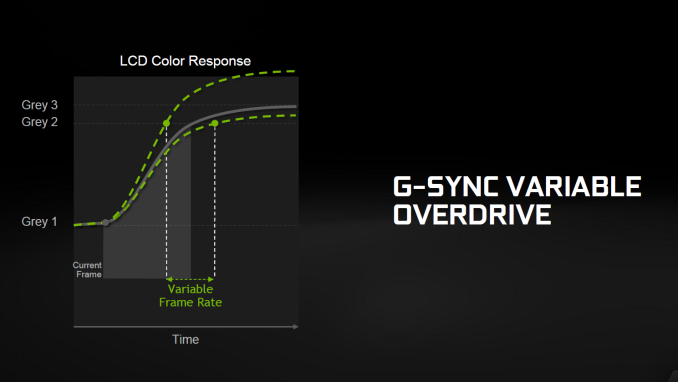
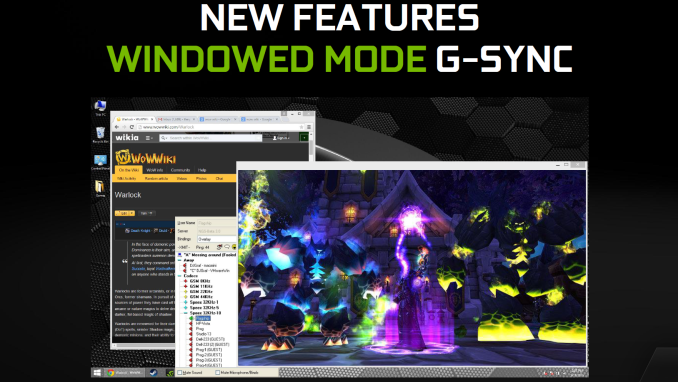
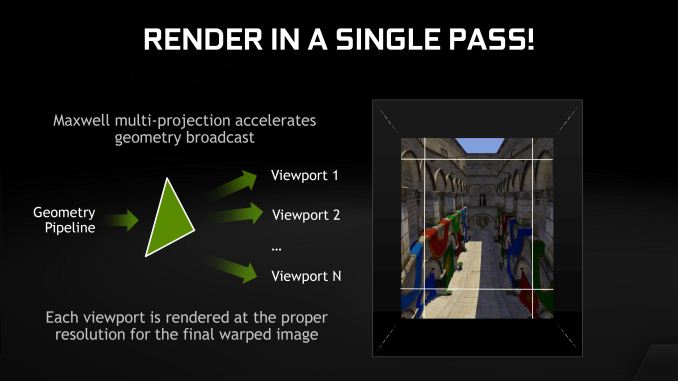
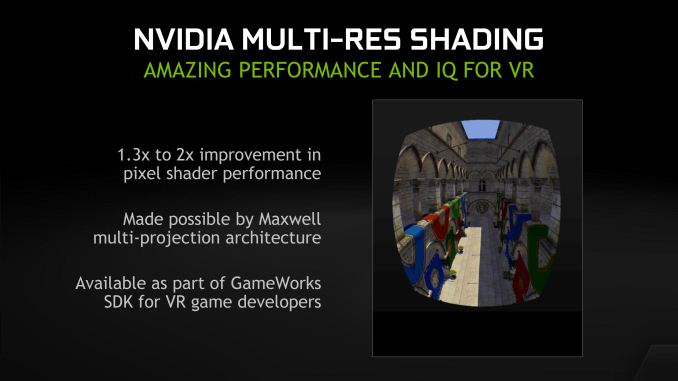
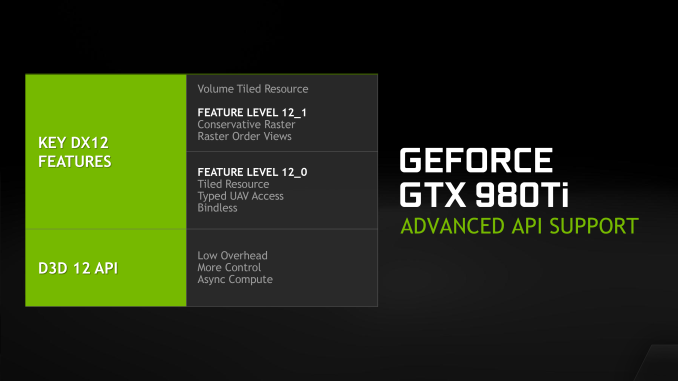








290 Comments
View All Comments
PEJUman - Monday, June 1, 2015 - link
I agree, the fact that AMD new 3xx is mostly (sans 1 new GPU) rebrands scares the crap out of me. and Nvidia knows it too, that's why we're getting the bad witcher 3 on gameworks @ kepler, astronomical prices and a generally very 'apple like marketing' from nvidia.Don't get me wrong, I certainly appreciate the level of refinements that Nvidia brings to the table, but without any answer from AMD, prices are very far from reasonable.
few years ago, I would never guessed PC gaming will be dead due to single GPU supplier situation, nowadays I am a lot more unsure...
Yojimbo - Monday, June 1, 2015 - link
In that case why assume that the 980 should have been dropped in price more. Maybe the 980 Ti should have been priced at $700?The difference between $500 and $650 is palpable. And the performance one requires depends on the monitor one has. What you seem to be saying is you would be willing to pay more than 30% price premium for a 30% increase in performance, which is usual. But when prices are actually set that way, there always seem to be people complaining the premium card is priced too high, and quoting the price/performance difference as the reason.
chizow - Monday, June 1, 2015 - link
@Yojimbo lol so true, people seem to think price:perf should be perfectly linear and comparable to some bargain bin part at $75, but if that was always the case, we'd all be using 2-3 gen old cards that can't play the games we want to play, today.dragonsqrrl - Sunday, May 31, 2015 - link
The 980 is $550, not $499. Despite that it still has a similar price/performance ratio to the 980 Ti. So technically it's no worse of a deal than the 980 Ti, but I think the 980 should still drop in price to ~$500 or $450. It should have a better price/performance ratio than the higher-end Ti.jjj - Sunday, May 31, 2015 - link
The 980 price has been dropped to 499$ and the point was that the TI and the 970 are much better buys, the 870 being way cheaper for little perf loss while the TI offers a lot more perf and is far better at 4k.dragonsqrrl - Sunday, May 31, 2015 - link
Ahh, sorry I missed that. However, at $500 the 980 still has a similar price/performance ratio as the 980 Ti. So while I do think it should drop by more, I'm also a bit confused by why people are calling it a terrible buy when it really isn't anymore terrible than the Ti at $650.just4U - Sunday, May 31, 2015 - link
(...sigh) $740 here in Canada.dragonsqrrl - Sunday, May 31, 2015 - link
:(o-k - Sunday, May 31, 2015 - link
could you please make sure this time that the ram is 384-Bit, 6GB total @ 7GHz GDDR5. Please double check.D. Lister - Sunday, May 31, 2015 - link
No, drop everything in your life AT staff, and effing TRIPLE check, and make sure to provide a notarized video of the process. Anything, ANYTHING at all, that can wash away the salt of the AMD rebadge, C'MOOOOON!